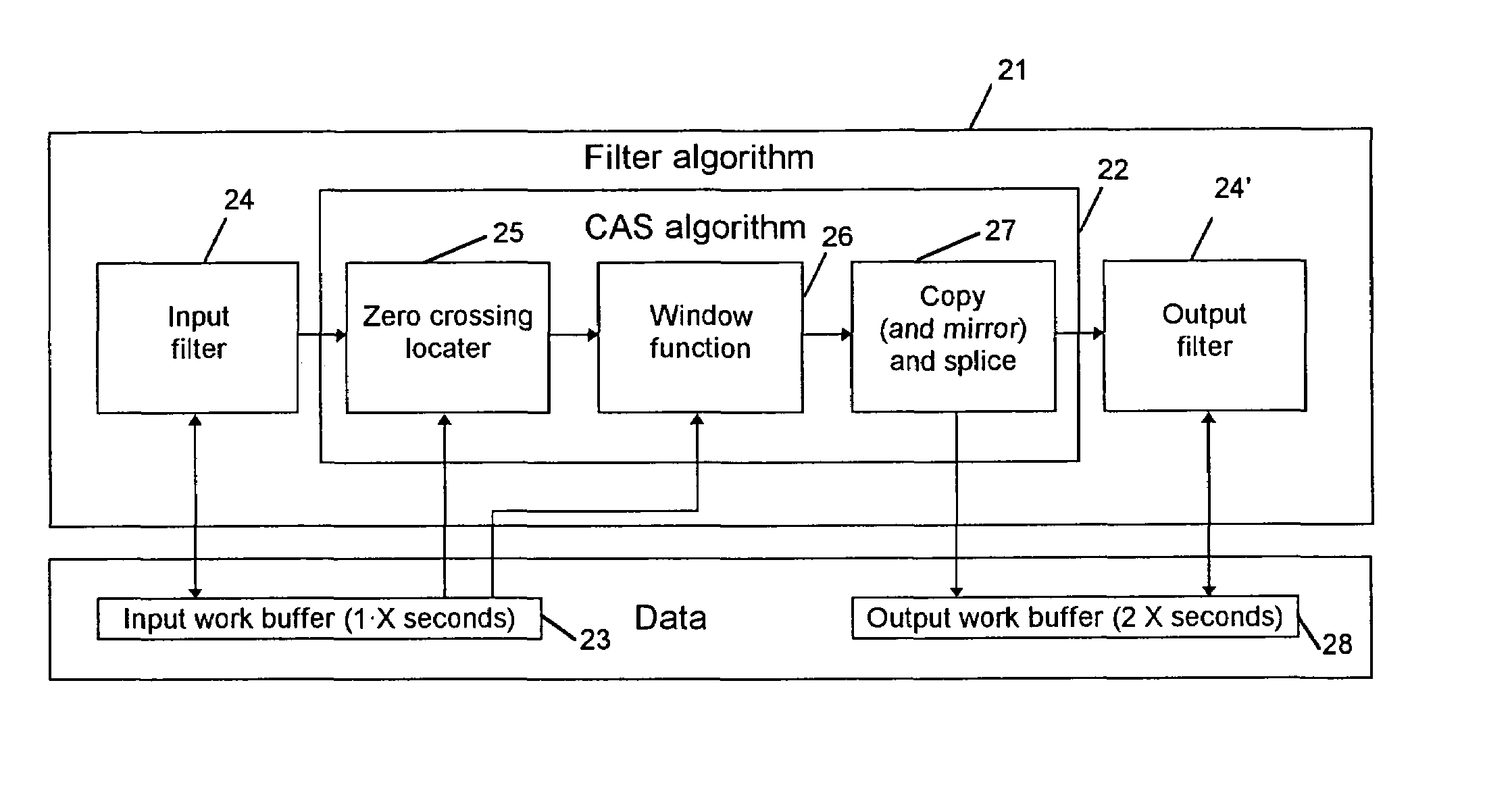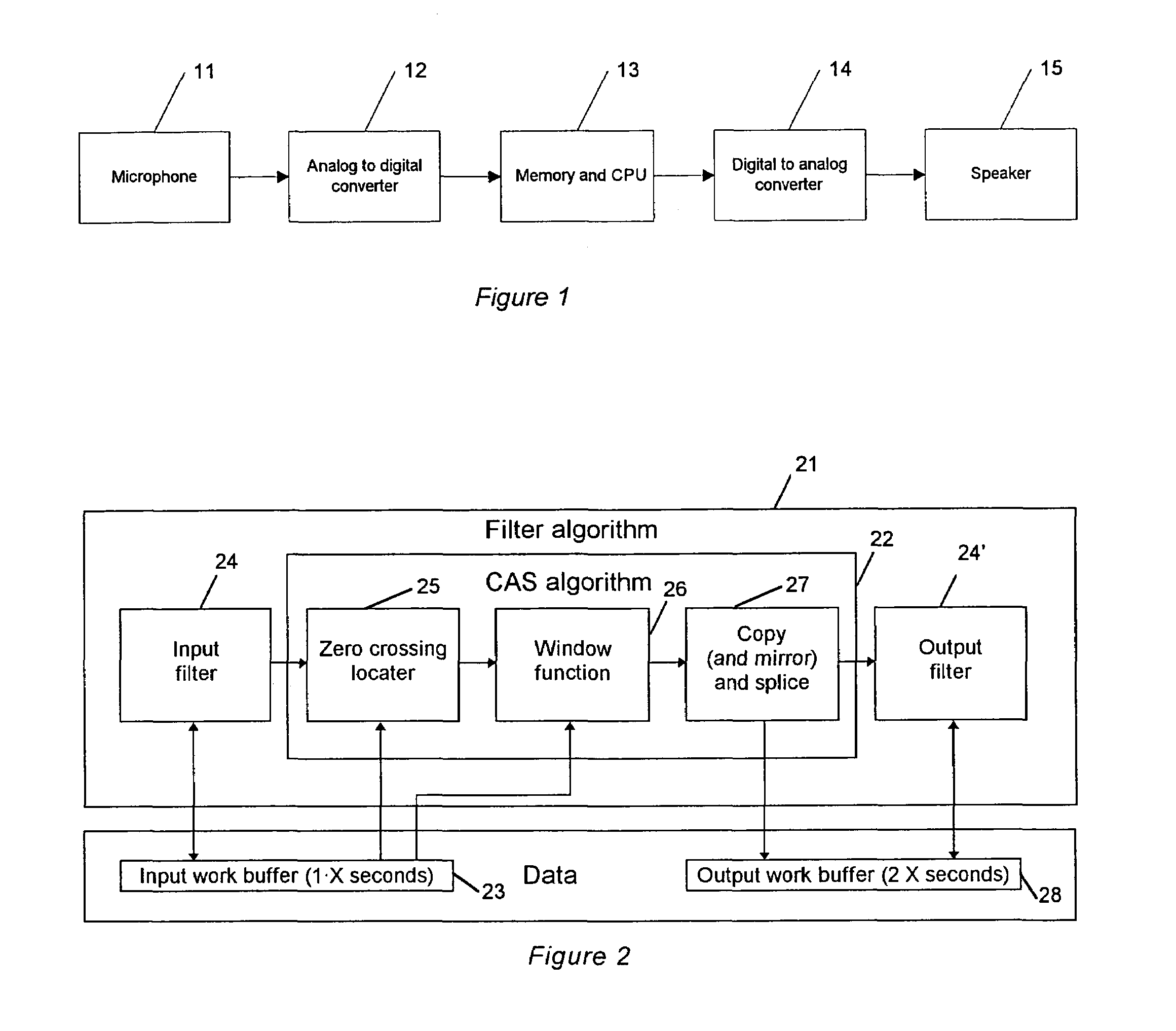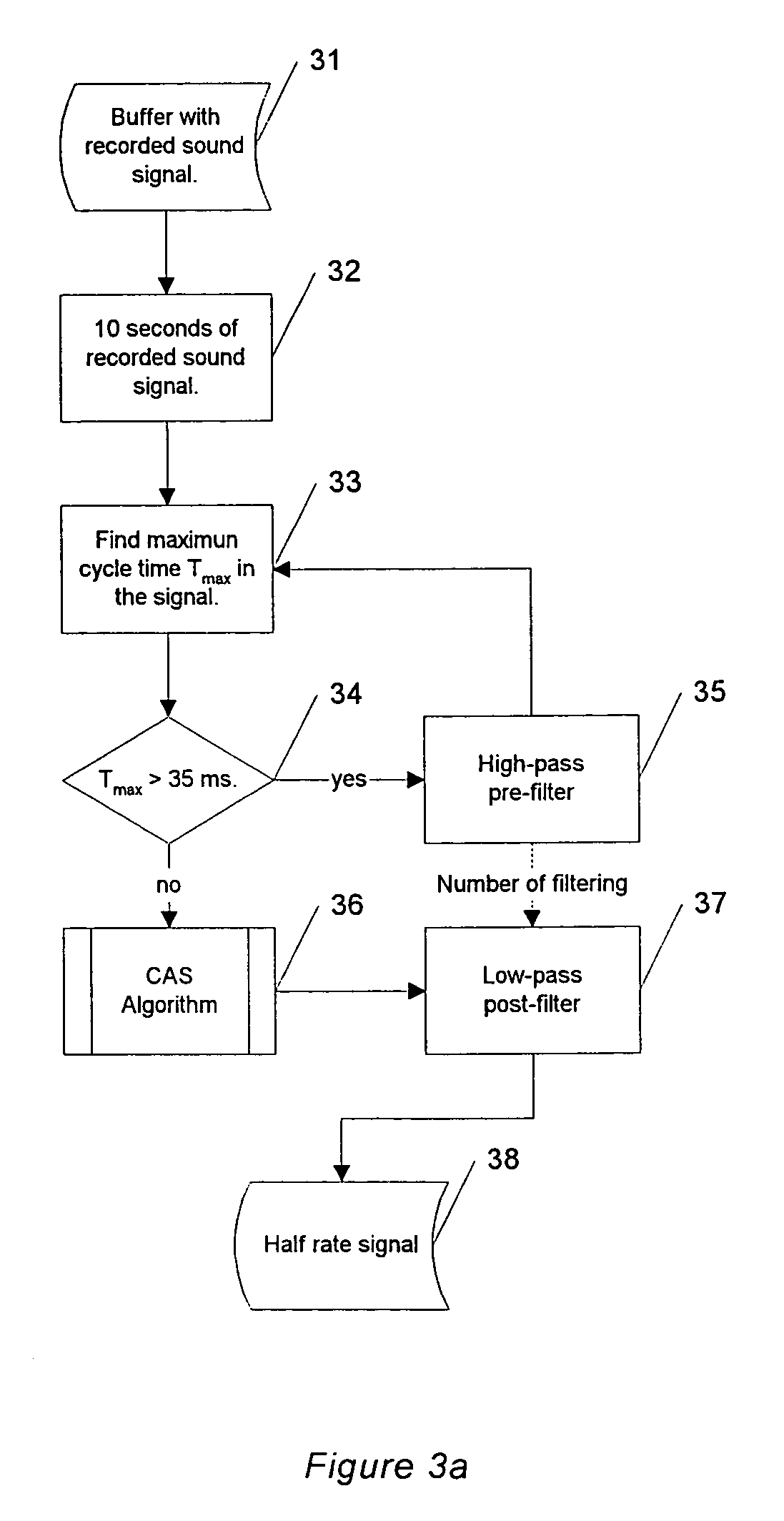Method and an apparatus for processing an auscultation signal
a technology of auscultation signal and processing method, which is applied in the field of electromechanical stethoscope, can solve the problems of incorrect diagnosis, confusion of listeners, and wrong interpretation of some sound elements, and achieve the effect of smoothing the transition between neighbouring segments
- Summary
- Abstract
- Description
- Claims
- Application Information
AI Technical Summary
Benefits of technology
Problems solved by technology
Method used
Image
Examples
Embodiment Construction
[0039]FIG. 1 illustrates an electronic stethoscope consisting of a microphone 11 connected to an analog to digital converter 12 from which the output is connected to a memory and central processing unit 13. The memory and central processing unit 13 is connected to a digital to analog converter 14 and the output is connected to a speaker 15. Thereby an auscultation signal is acquired, processed, and reproduced as a sound signal.
[0040]In use, the physician places the microphone 11, which may be in the shape of a bell, on the patient's chest and the sound is recorded and processed in the processing unit 13. It is possible to hear the processed signal by using the speaker or speakers 15 connected to the digital to analog converter 14.
[0041]FIG. 2 illustrates the half rate algorithm performed by the central processing unit and memory 13. This algorithm consists of two parts—a filter algorithm 21 and a copy-and-splice (CAS) algorithm 22. The recorded data is placed in the input work buffe...
PUM
 Login to View More
Login to View More Abstract
Description
Claims
Application Information
 Login to View More
Login to View More - Generate Ideas
- Intellectual Property
- Life Sciences
- Materials
- Tech Scout
- Unparalleled Data Quality
- Higher Quality Content
- 60% Fewer Hallucinations
Browse by: Latest US Patents, China's latest patents, Technical Efficacy Thesaurus, Application Domain, Technology Topic, Popular Technical Reports.
© 2025 PatSnap. All rights reserved.Legal|Privacy policy|Modern Slavery Act Transparency Statement|Sitemap|About US| Contact US: help@patsnap.com



